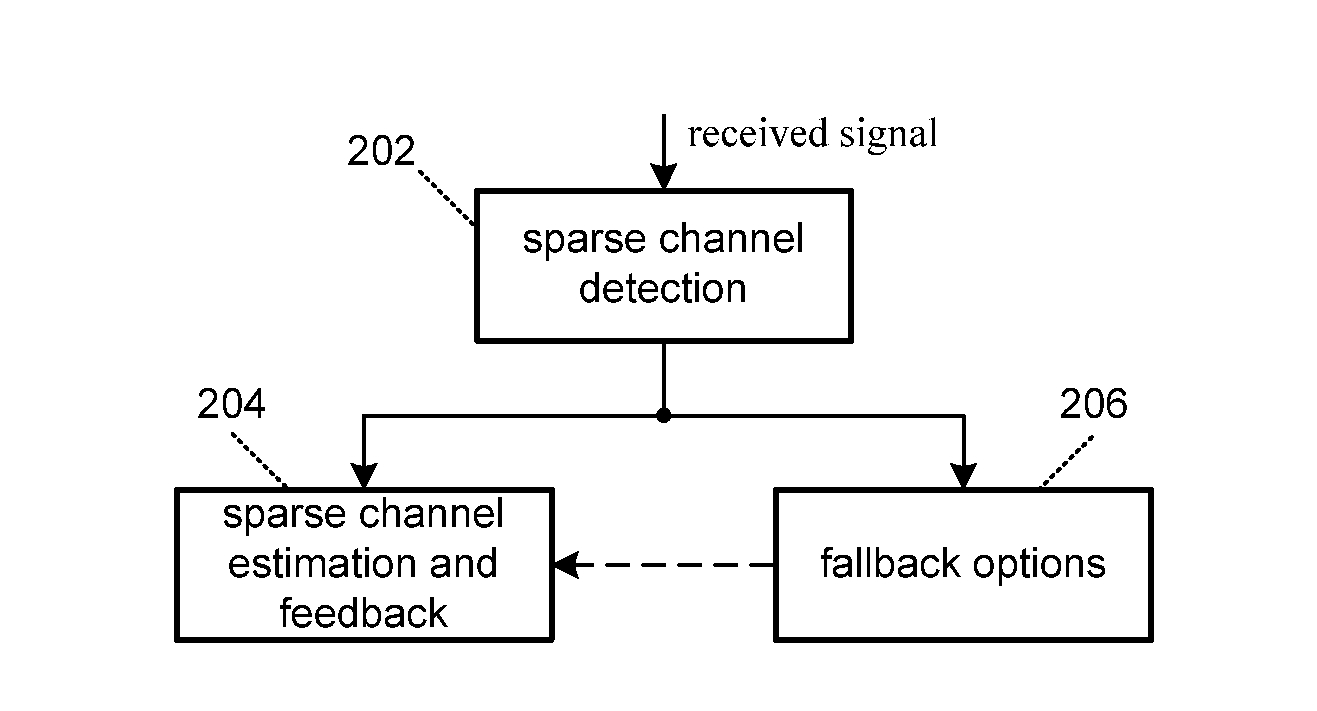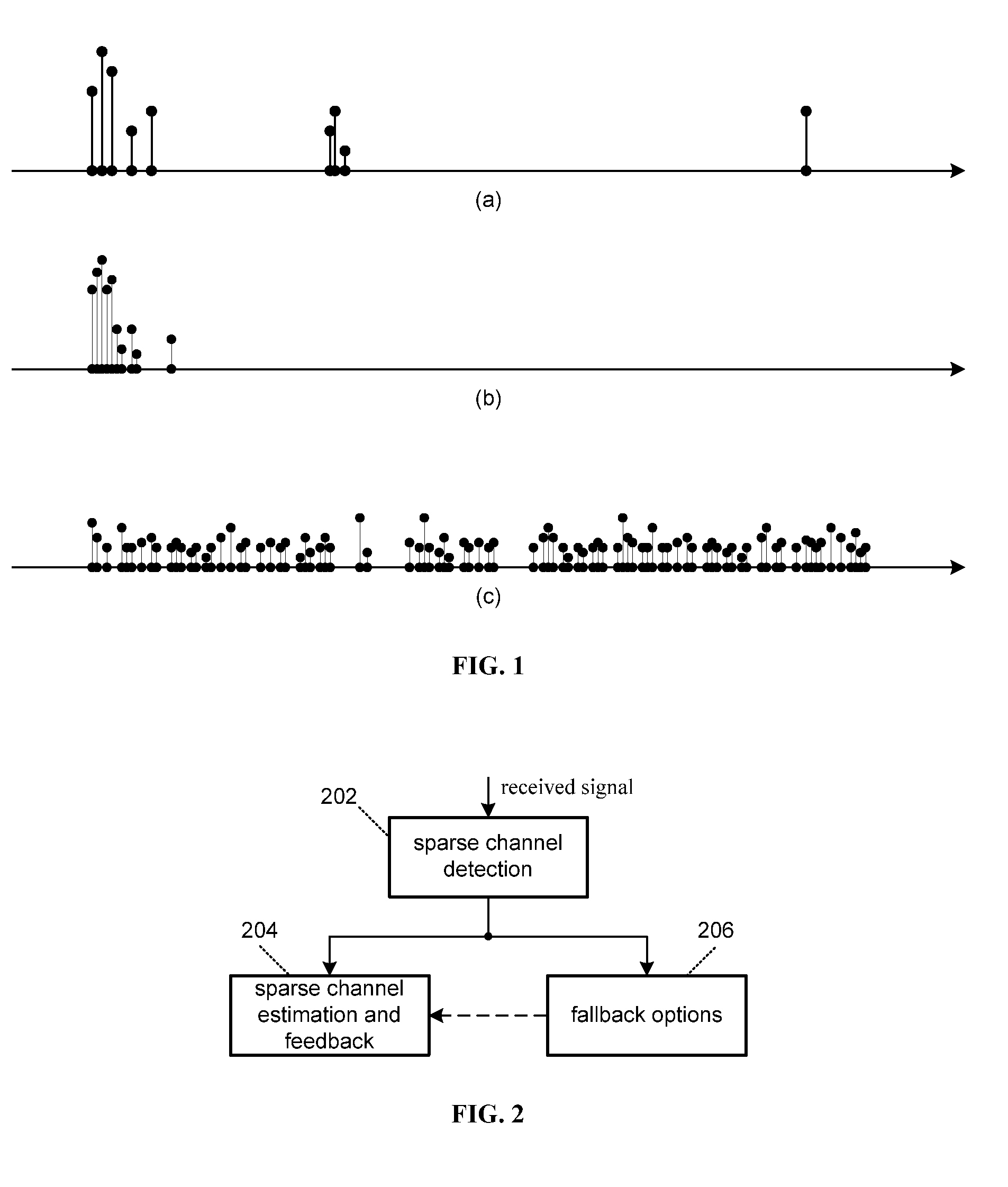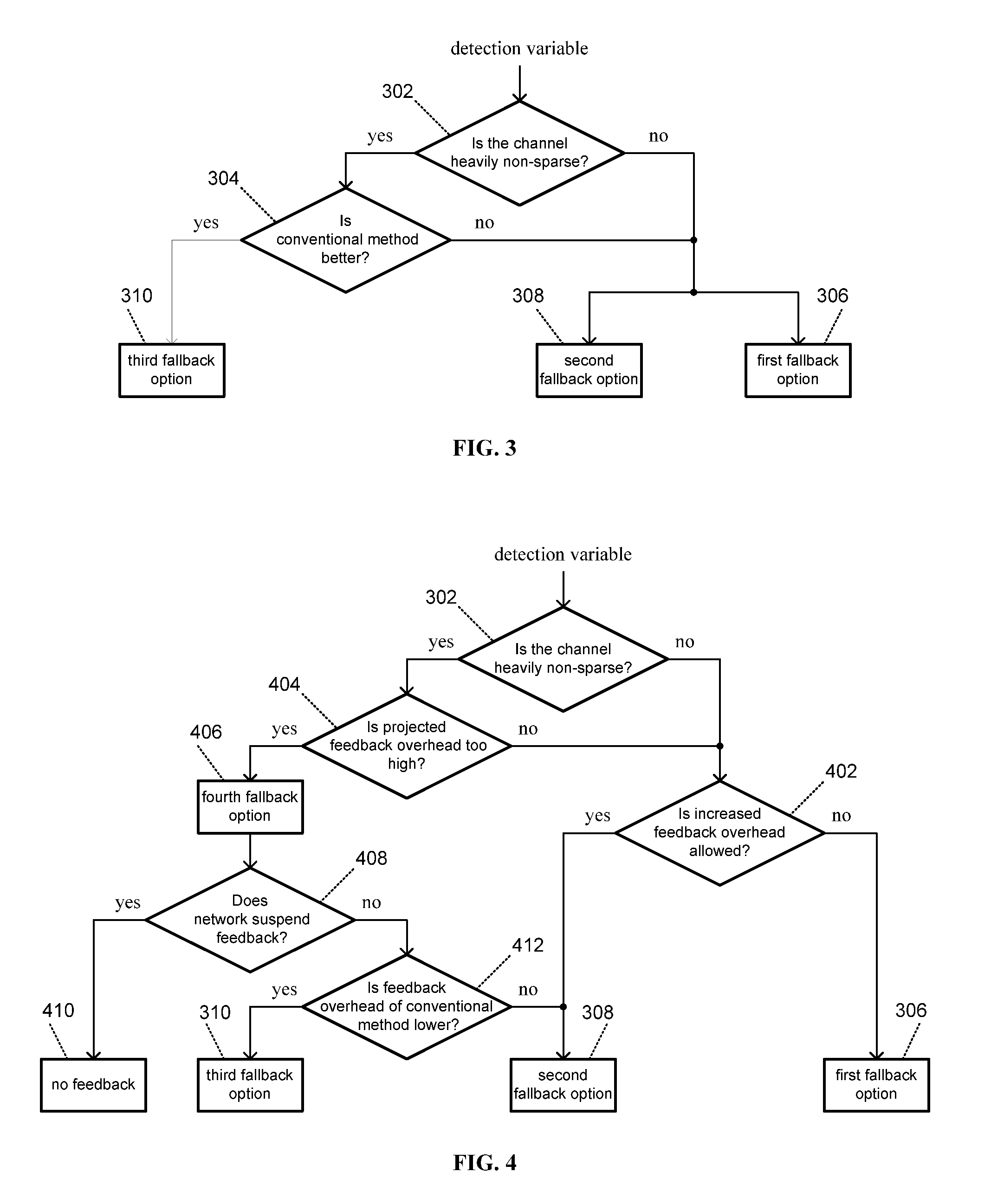Sparse Channel Detection, Estimation, And Feedback
a technology of sparse channel and estimation, applied in the field of telecommunications systems and wireless communications systems, can solve the problems of reducing the uplink capacity, reducing the overhead of feedback, and reducing the efficiency of sparse channel-based methods such as tdp extraction, so as to improve the estimation accuracy and reduce the overhead of feedback
- Summary
- Abstract
- Description
- Claims
- Application Information
AI Technical Summary
Benefits of technology
Problems solved by technology
Method used
Image
Examples
Embodiment Construction
[0019]The disclosed subject matter will now be described more fully hereinafter with reference to the accompanying drawings, in which some, but not all aspects or embodiments, are shown with like numerals referring to like elements throughout the description. Various aspects may be embodied in many different forms and should not be construed as limited to the embodiments set forth herein. Specific details are described for the purpose of providing a thorough understanding of the subject innovation. It may be evident, however, that the disclosed subject matter may be practiced without these specific details. In other instances, well-known methods, procedures, and components have not been described in detail so as not to obscure the subject innovation.
[0020]As used herein, term “channel feedback” is intended to refer to feedback of the full channel information, i.e., all channel information that is needed for data demodulation, as opposed to feedback of only a few of the channel chara...
PUM
 Login to View More
Login to View More Abstract
Description
Claims
Application Information
 Login to View More
Login to View More - R&D
- Intellectual Property
- Life Sciences
- Materials
- Tech Scout
- Unparalleled Data Quality
- Higher Quality Content
- 60% Fewer Hallucinations
Browse by: Latest US Patents, China's latest patents, Technical Efficacy Thesaurus, Application Domain, Technology Topic, Popular Technical Reports.
© 2025 PatSnap. All rights reserved.Legal|Privacy policy|Modern Slavery Act Transparency Statement|Sitemap|About US| Contact US: help@patsnap.com



